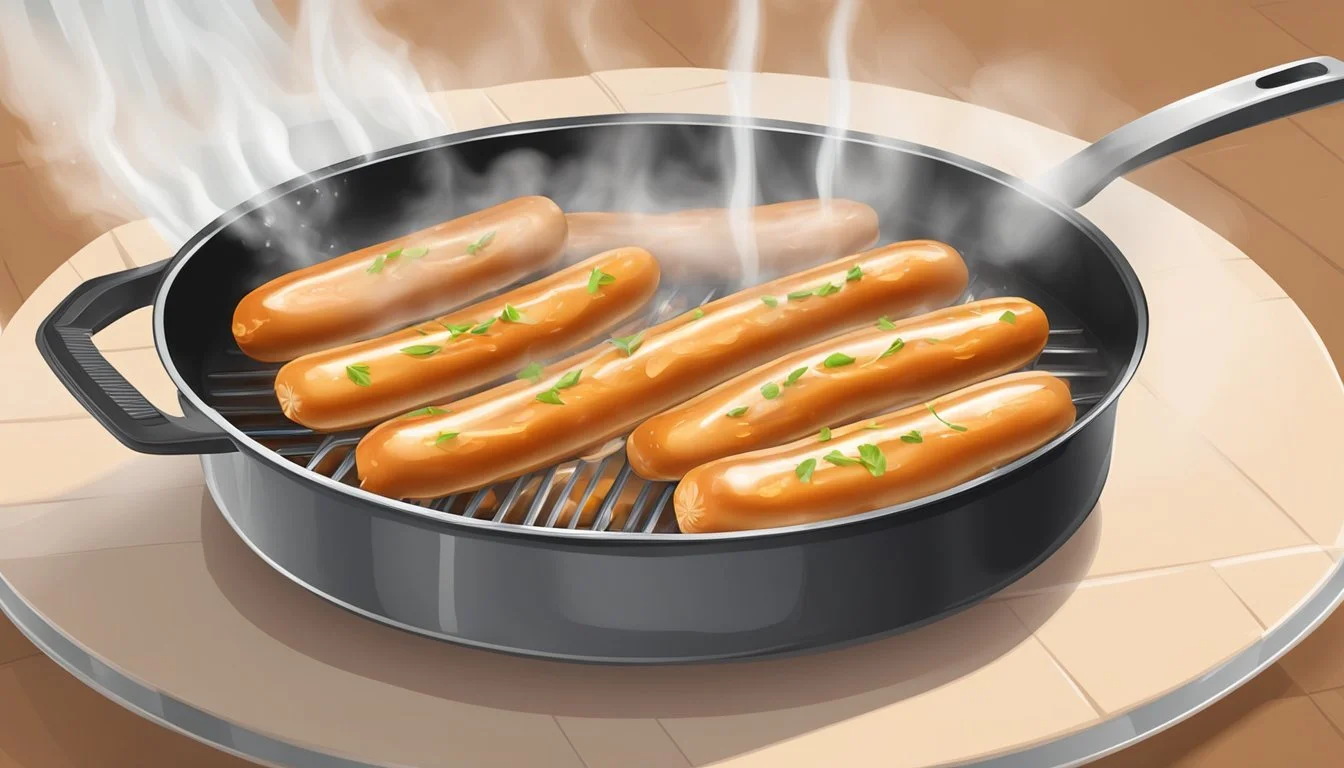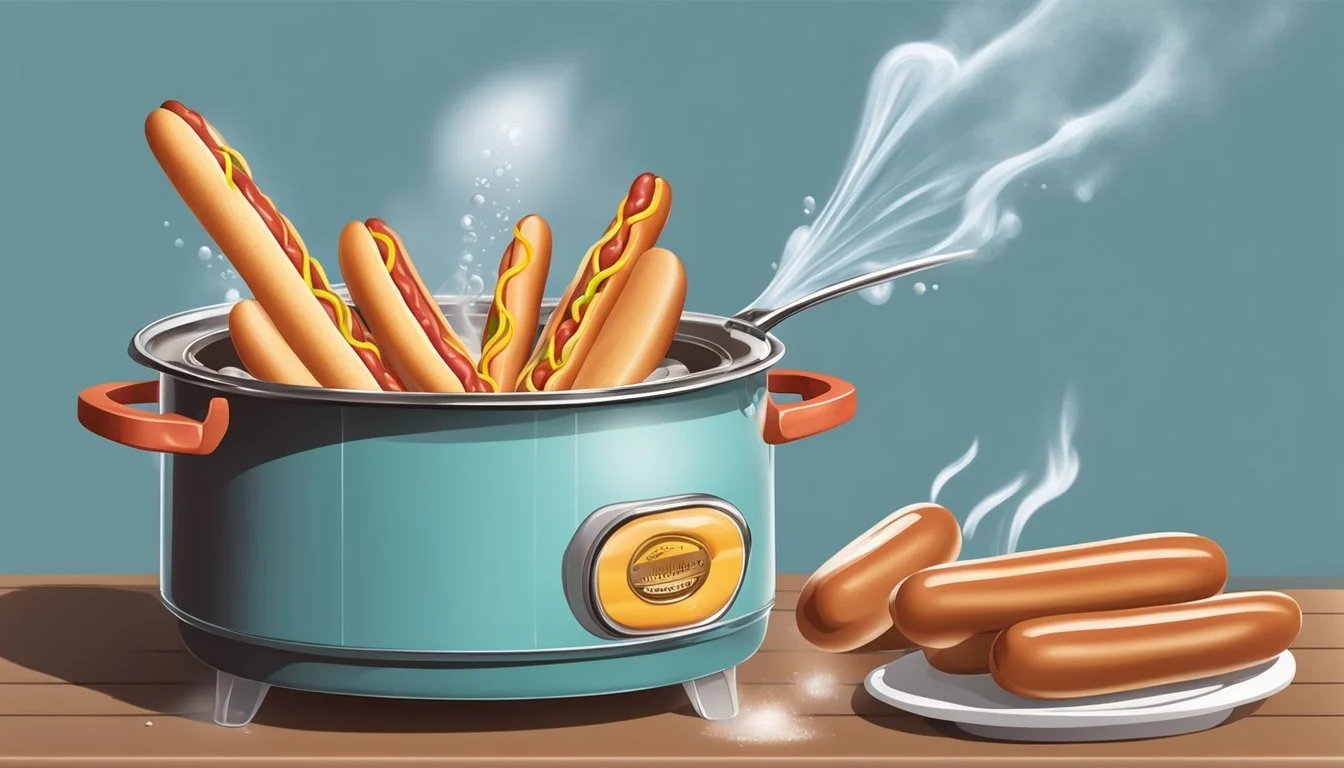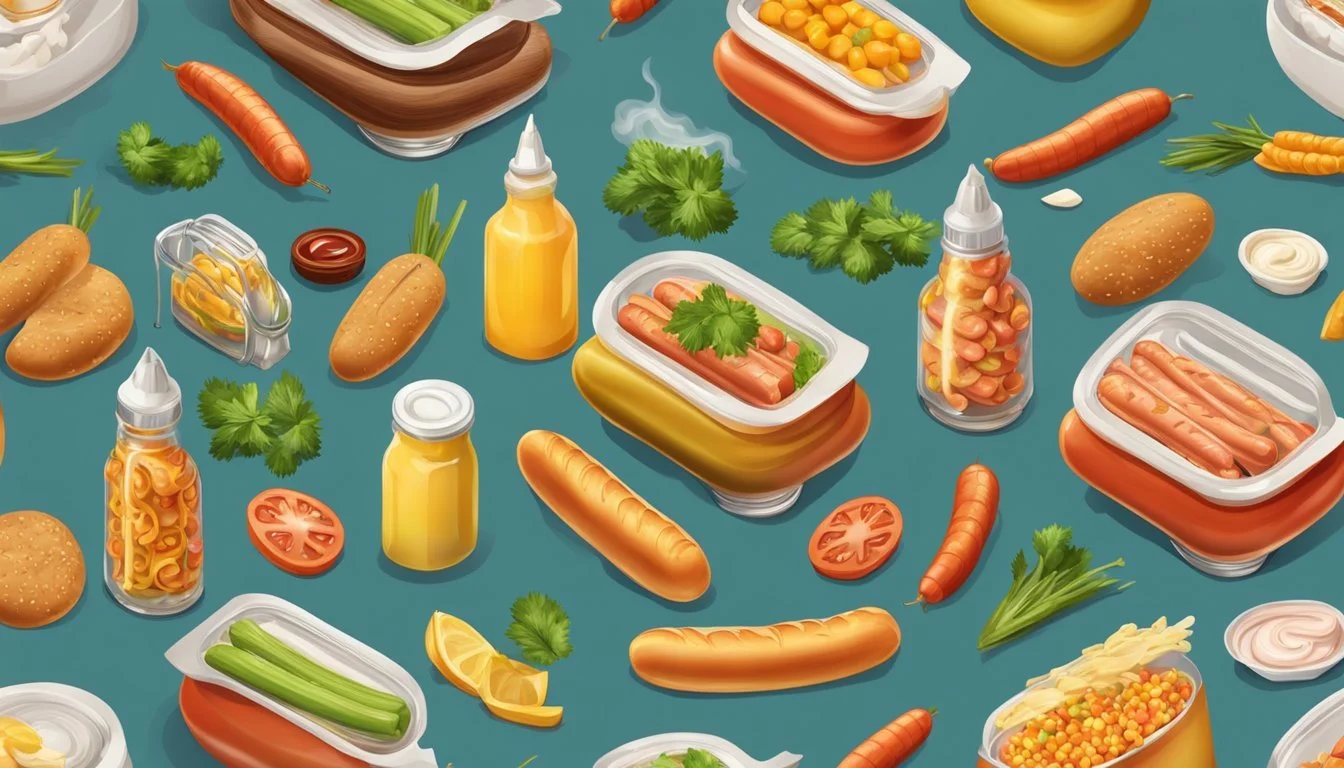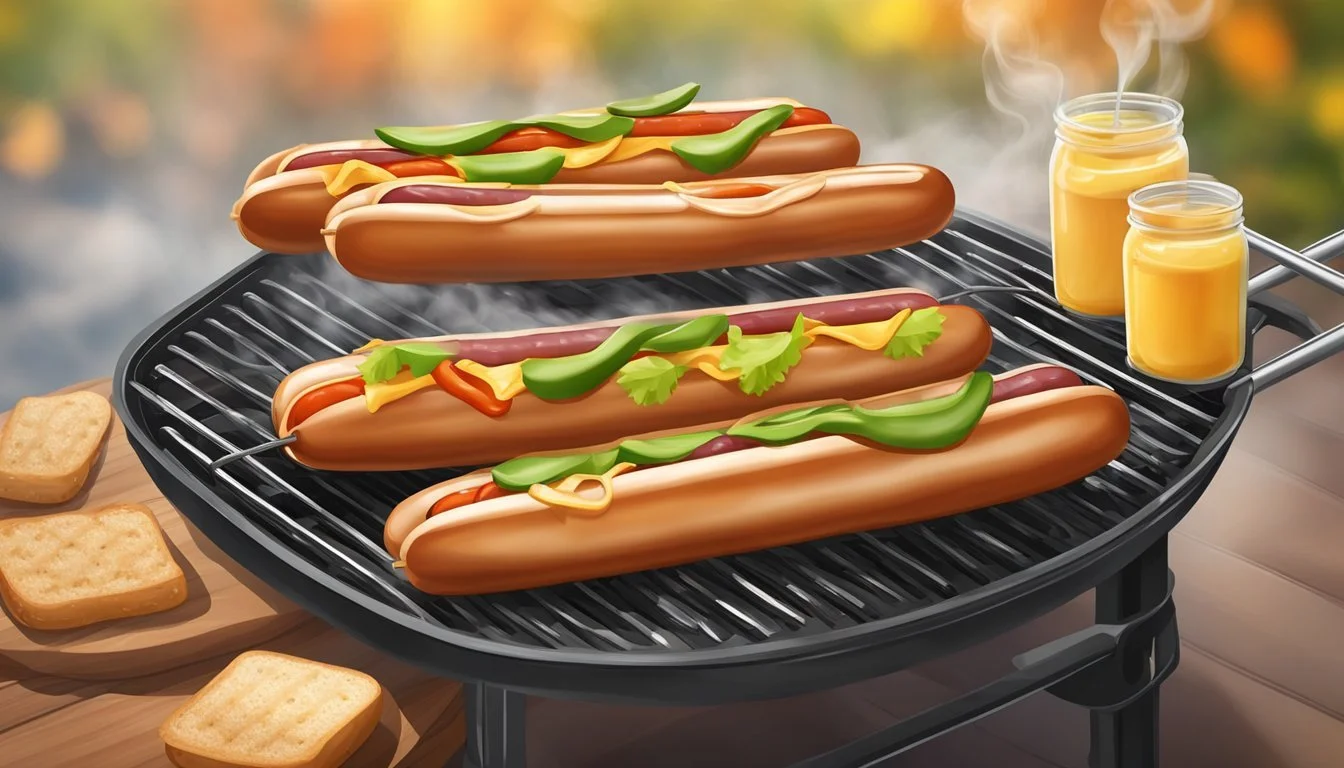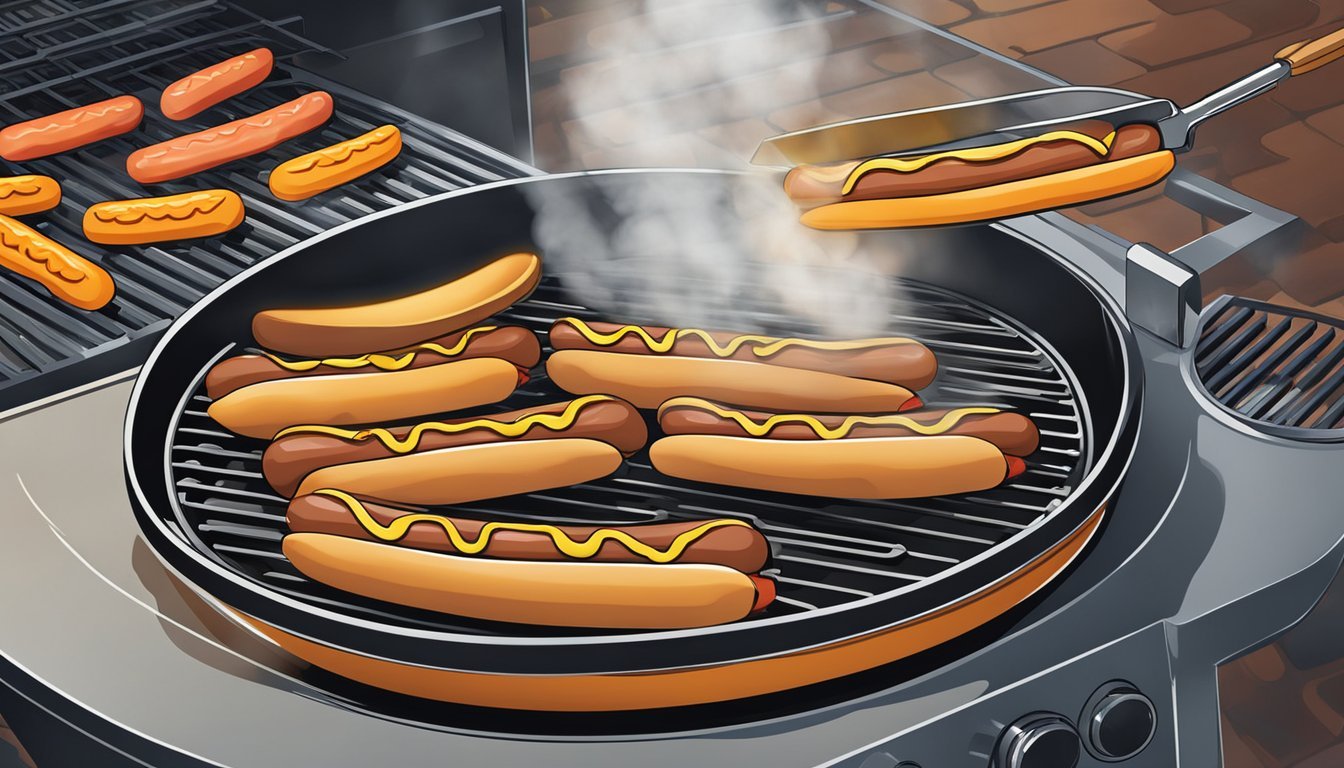Best Way to Reheat Frankfurters
Ensuring Juiciness and Plumpness
Reheating frankfurters properly is crucial for maintaining their juiciness and ensuring that they remain plump. Whether enjoying leftovers or preparing a quick snack, the method used can make a significant difference in the quality of the hot dog. Retaining the original flavor and texture is a matter of choosing the right reheating technique that will evenly warm the hot dog without drying out or overcooking it.
Several methods stand out when it comes to reheating hot dogs. The oven and the stovetop are the most commonly recommended warming methods to preserve the juiciness of frankfurters. The oven provides a consistent heat that helps in gradual reheating, thus preventing the frankfurters from becoming tough or rubbery. The stovetop, particularly using steam or a gentle simmer, is an equally effective method that keeps the hot dogs moist and flavorful.
Using a microwave may offer rapid results, but it requires attention to detail to avoid hot spots or drying. Wrapping the hot dogs in parchment paper before microwaving can help absorb excess moisture and ensure even warming. Other methods such as an air fryer or grilling can also reheat frankfurters satisfactorily, but careful monitoring is essential to maintain their desirable qualities.
Understanding Hot Dogs and Reheating Basics
The key points to successful reheating of hot dogs lie in understanding their unique composition and applying safe reheating practices to preserve their juicy texture and savory flavor.
Types of Hot Dogs and Their Composition
Hot dogs, often made from a combination of meats such as beef, pork, turkey, or a blend, are seasoned emulsifications of protein, fat, and water, held together in a casing. The standard hot dog is a fully cooked product that just needs reheating. Their texture varies from firm to soft and their flavor profiles can range from smoky to spicy, often accentuated by the use of specific seasonings.
Key Considerations for Reheating
When reheating hot dogs, one should strive to maintain their moisture and avoid drying them out. The method chosen will affect the texture and flavor:
Microwave: Quick and convenient for reheating, wrapping in a damp paper towel can help retain moisture.
Oven Baking: Preheat to 375°F and reheat for a few minutes, turning once to promote even heating.
Air Frying: Preheat the air fryer and reheat the hot dogs so they become warm throughout without losing their plumpness.
Stovetop: Steam or simmer hot dogs in a small amount of water to keep them moist.
Safety Tips to Prevent Foodborne Illness
To prevent foodborne illness, one must follow these safety guidelines:
Always start with hot dogs that have been stored correctly, at or below 40°F.
Use a food thermometer to ensure the internal temperature reaches 165°F when reheating.
Consume reheated hot dogs immediately and never reheat a hot dog more than once.
Remember, whether enjoying a simple snack or incorporating hot dogs into a meal, preserving their taste and texture during reheating is as important as following safety protocols to prevent foodborne illness.
Preparation for Reheating
Proper preparation of frankfurters before reheating is crucial for maintaining their quality and juiciness. Understanding the right approach to handle cold hot dogs and having the necessary tools ensure the reheating process yields the best results.
Handling Cold Hot Dogs
When dealing with leftover cold hot dogs, one must first ensure they are safe for consumption. If they have been stored properly in the refrigerator, they can be safely reheated while still maintaining their quality. It is important to bring the hot dogs to room temperature for about ten to fifteen minutes before reheating. This step ensures even warming and helps maintain the frankfurters' plumpness.
Leftover hot dogs should also be checked for any signs of spoilage such as off odors or discoloration. The hot dogs are then gently patted dry to remove any excess moisture which could affect browning and texture upon reheating.
Required Tools and Utensils
The following is a list of tools and utensils recommended for reheating hot dogs:
Oven/Microwave/Air Fryer/Stove: Depending on the reheating method chosen.
Baking Tray: For oven reheating, lined with parchment paper for easy cleanup.
Aluminum Foil: Useful for wrapping buns and hot dogs to retain moisture.
Tongs: To safely turn the hot dogs during reheating, ensuring even heat distribution.
Brush: To lightly coat the hot dogs with butter if desired, for added flavor and to prevent drying out.
It's suggested to use a small amount of butter or oil to help restore some of the fat content if the cold hot dogs have dried out in storage, which will in return help retain their juiciness. However, the use of butter should not be excessive, as the goal is to enhance the hot dogs' natural flavor without making them greasy.
Reheating Methods Overview
When it comes to restoring the juiciness and plumpness of leftover frankfurters, selecting the appropriate reheating method is crucial. This section outlines various techniques, focusing on their specific advantages and best practices.
Stovetop Technique and Boiling Method
Stovetop Reheating involves heating frankfurters in a skillet with a small amount of cooking oil. One should frequently turn the sausages to achieve even warming without burning them. The Boiling Method requires submerging hot dogs in boiling water for a few minutes. This technique is great for keeping them moist, but one should avoid over-boiling to prevent splitting the skins.
Grilling and Broil Methods
Grilling provides hot dogs with a smoky flavor akin to fresh-off-the-grill taste. One should preheat the grill and cook the frankfurters over moderate heat, turning occasionally. Broiling is somewhat similar, where franks are placed on a broiler pan and reheated in the oven, giving them a slightly charred exterior without drying out the interior.
Oven and Baking Advantages
Oven Reheating entails placing frankfurters on a baking tray and heating at a low temperature, such as 350°F (175°C), which gradually warms them through without removing moisture. This method is excellent for large batches and provides consistent results without the need for constant attention.
Microwave Reheating Pros and Cons
Reheating in a Microwave is quick and convenient. Sausages should be placed on a microwave-safe plate, covered with a paper towel to retain moisture, and heated in short intervals. However, microwaving can unevenly heat and sometimes make the skin tough or rubbery if not monitored closely.
Using an Air Fryer for Reheating
Air Frying can be an efficient way to reheat hot dogs, especially to maintain a crisp exterior. Setting the air fryer to 350°F (175°C) and reheating for a couple of minutes can provide pleasing results. It's a swift method that doesn't require preheating time like an oven, making it a convenient choice for small quantities.
Step-by-Step Reheating Instructions
Reheating frankfurters requires a method that ensures they remain juicy and plump. The following strategies cater to diverse kitchen equipment and time constraints, aiming for the best texture and flavor retention.
Reheating on the Stovetop
To reheat on the stovetop, one should place the frankfurters in a skillet with a little water over medium heat, turning them occasionally. This method typically takes about 5-8 minutes. The water creates a steaming effect, keeping the hot dogs moist.
Grilling Hot Dogs to Retain Flavor
Grilling leftover hot dogs can help retain their smoky flavor and add a little char that many find appealing. They should be placed on a preheated grill for about 5-7 minutes, rotated to ensure even heating and to achieve desirable grill marks.
Oven-Based Reheating for Even Warmth
For oven reheating, one should preheat the oven to 350°F (180°C). The frankfurters can be wrapped in foil to prevent drying and placed on a baking tray for even warmth distribution, reheating for about 10-15 minutes.
Microwaving for a Quick Reheat
The microwave method is the fastest way to reheat hot dogs. They should be placed on a microwave-safe plate, possibly with a cover of plastic wrap to trap steam, and heated on high for 30-40 seconds. One must ensure to avoid overcooking as it can make them rubbery.
Achieving Crispness with an Air Fryer
An air fryer can crisp the skin of frankfurters effectively. Preheat the air fryer to 350°F (175°C) and cook for 2-3 minutes. This method is quick and helps prevent the hot dogs from becoming soggy or drying out.
Handling Condiments and Accessories
When reheating frankfurters, one should not overlook the importance of properly handling condiments and accessories to maintain their flavor and texture. This section will guide you through the optimal methods for reheating hot dog buns and applying condiments.
Best Practices for Reheating Hot Dog Buns
To ensure hot dog buns remain soft and warm without becoming soggy or overly crispy, the following steps are recommended:
Preheat the oven: Preheat your oven to 350°F (180°C) to prepare for bun warming.
Prepare the buns: Lightly brush the buns with butter for added flavor and moisture.
Wrap in foil: Individually wrap each bun in aluminum foil to preserve moisture and prevent drying out.
Bake with precision: Place the wrapped buns in the oven, heating them for approximately 5 minutes. Buns should be turned over once to heat evenly.
Selecting and Applying Condiments
After reheating the frankfurters and buns, it’s time to dress them with condiments. For the best flavor profile and texture, consider the following:
Selecting Condiments:
Mustard: Adds a tangy and sharp taste that complements the frankfurter.
Ketchup: Provides a sweet and slightly tangy contrast.
Relish: Offers a sweet or tangy pickled flavor, depending on the variety.
Onions: Fresh or caramelized, onions add a sweet or sharp crunch.
Applying Condiments:
Order Matters: Apply condiments that tend to run, like ketchup and mustard, onto the bun before placing the frankfurter to prevent sogginess.
Serving Suggestion: Provide condiments on the side, allowing everyone to customize their hot dog to their preference.
One should evenly distribute condiments along the length of the frankfurter, ensuring each bite includes the full range of flavors. Condiments should not overpower the frankfurter but rather complement it, bringing out its rich and savory taste.
Serving and Presentation
When reheating hot dogs, presentation is key to elevate the humble frankfurter to a meal that’s both appetizing and appealing. Proper arrangement on the plate and thoughtful accompaniments can make a significant difference.
Arranging Reheated Hot Dogs
Heated hot dogs should be nestled in fresh buns for the best eating experience. Each bun can be lightly toasted to add warmth and a slight crunch. For a visually appealing serving method, they can lay diagonally on a plate in parallel lines or displayed in a circular pattern on a platter. Condiments like mustard, relish, or chili should be neatly applied in a zigzag pattern across the top of the hot dog or served on the side for guests to add to their taste.
Mustard: A traditional and beloved condiment, best applied in a neat line.
Relish: Offers a zesty complement, spoon it alongside the frankfurter.
Chili: A hearty addition, ladle it over the top for a rich flavor.
Leftovers: Creatively incorporate any additional toppings that were stored with the leftovers.
Side Dishes and Complements
A well-rounded meal includes side dishes that complement the main star. Classic accompaniments with reheated frankfurters can elevate the dish:
Onion Rings: Serve them in a separate container or stack them artfully on one side of the plate.
Side Salad: Offer a light, fresh option to balance the meal.
It's also important to consider the color and texture contrast of the side dishes with the main course to create an inviting plate. Aromatic garnishes such as fresh herbs or a sprinkle of paprika can add a final touch of flavor and color.
Storing Leftovers and Second-Time Reheating
When storing leftover hot dogs, they must be cooled promptly and refrigerated to ensure safety. The reheating process for previously reheated hot dogs should aim to maintain juiciness without compromising food safety.
Refrigeration and Food Safety
After enjoying a meal, one should immediately refrigerate any uneaten hot dogs. Leftover hot dogs should be placed in shallow containers to cool rapidly and evenly, reducing the time they spend in the temperature danger zone where bacteria can multiply. The refrigerator's internal temperature should be set below 40 degrees Fahrenheit to ensure the leftovers remain at a safe temperature.
Storage tip: Wrap individual hot dogs in plastic wrap or place them in airtight containers.
Safety check: Revisit stored hot dogs within 3-4 days, as this is the safe consumption window for refrigerated cooked meats.
Reheating Previously Reheated Hot Dogs
When one decides to reheat hot dogs that have already undergone a reheating process, it's pivotal to reach an internal temperature of 165 degrees Fahrenheit for safety. This temperature ensures the elimination of any potentially harmful bacteria that may have developed. Using a food thermometer is the best way to check this.
Methods for Reheating:
Microwave: Place the hot dogs in a microwave-safe dish, cover with a paper towel to retain moisture, and heat in 30-second intervals until the desired temperature is reached.
Stovetop: Boil water in a pot, reduce to a low simmer, and submerge the hot dog for a few minutes until thoroughly heated through.
Reheating more than once is generally not recommended. However, if necessary, the hot dogs should be handled carefully to prevent drying out or becoming tough.
Troubleshooting Common Reheating Issues
When reheating frankfurters, maintaining their quality in terms of texture and juiciness is pivotal. One wants to avert the plight of a soggy bun or an overcooked hot dog, ensuring the reheat delivers a meal almost as fresh as the original cook.
Dealing with Dry or Overcooked Hot Dogs
Dry or overcooked hot dogs can result from excessive heating times or high temperatures. This compromises their texture and juiciness.
Microwave: To prevent overcooking in the microwave, heat the hot dogs in intervals of 15-30 seconds, checking their temperature between intervals.
Oven: If using an oven, wrap the frankfurters in foil, and heat at a low temperature, around 350°F, for a short time.
Steaming: Alternatively, steaming frankfurters in a stovetop steamer for a few minutes can rejuvenate their juiciness.
Preventing Sogginess in Buns and Toppings
A soggy bun detracts from the overall enjoyment of the frankfurter. One must handle buns and toppings with care to maintain the desired quality.
Buns:
Oven: Lightly dampen the bun and wrap it in foil, then heat in the oven at 350°F for about 5 minutes.
Toaster: For a crisper texture, place the bun in a toaster oven for a short duration.
Toppings: Should be applied after reheating, especially with moisture-rich condiments. Warm toppings like chili or cheese can be heated separately and added back to the hot dog to ensure a balanced texture.
Utilizing these methods ensures that frankfurters and buns retain their ideal texture and juiciness, making for a satisfying meal.
Creative Ideas for Leftover Hot Dogs
When dealing with leftover hot dogs, one can transform them into new and exciting dishes. These creative ideas preserve the juicy flavor of frankfurters while providing a delicious twist on traditional servings.
Innovative Recipes and Serving Suggestions
Leftover hot dogs can bring new life to your meals with a bit of creativity. Here are some innovative ways to serve them:
Chili Dog Casserole: Lay a foundation of canned chili with beans in a dish, wrap hot dogs in tortillas, and assemble them over the chili. Top with shredded cheese and bake until golden.
Hot Dog Pizza: Use diced leftover hot dogs in place of pepperoni on a homemade pizza. Add a layer of caramelized onions for a gourmet touch.
Preparation Ingredients Method Hot Dog Fried Rice Leftover hot dogs, rice, frozen veggies Fry the hot dogs until crispy, mix in cooked rice and veggies. Season to taste. Hot Dog Omelette Leftover hot dogs, eggs, cheese, and herbs Slice the hot dogs, cook with the eggs, and add cheese for a hearty breakfast.
Making the Most of Your Leftovers
There’s more to leftover hot dogs than just reheating them. They can be repurposed to add flavor and substance to a variety of dishes:
Baked Hot Dog Bites: Cut the hot dogs into chunks and bake in a casserole with rice, canned corn, and cheese for a complete, tasty meal.
Hot Dog Salad: Slice them up and toss them into a salad with a relish dressing to add a savory punch.
Remember, leftover hot dogs should be consumed within four days of refrigeration, ensuring that taste and safety go hand in hand. Enjoy these fun and flavorful reincarnations of a classic favorite.

